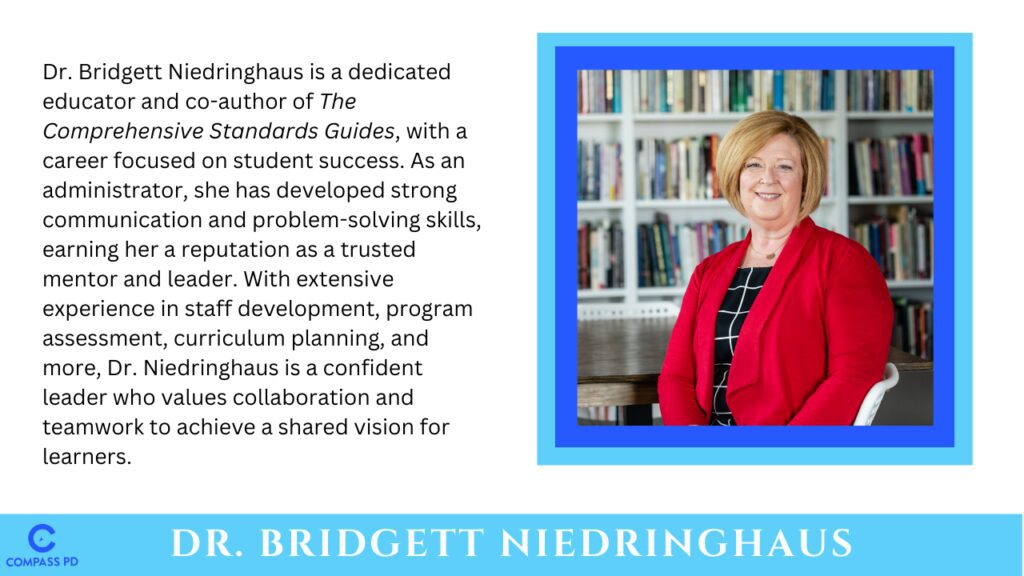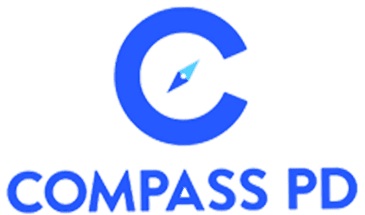Mid-Year Momentum: Reenergizing School Leaders for Success
By Dr. Bridgett Niedringhaus
So, it’s that time of year when we are coming off a high… Christmas break and New Year’s celebrations, and for some of us, especially in the Midwest, we got an extra week of vacation due to snow. As an administrator, you reflect on what was accomplished during the first semester of school and what lies ahead. Now is the time to learn from the past semester and apply it to the next semester.
We all need the time and opportunity to reflect on what we’ve done, decide what we need to do differently, and celebrate what we’ve done well. At this time of year, administrators must decide what to focus on for the second half of the year and build momentum within our schools to get the job done.
Here are some quick tips for administrators as we head into the second part of the school year or that second semester.
Refocus
We all know that goals were set at the beginning of the school year. While we have the best intentions to accomplish our goals and benchmarks, we need to decide if it’s time to retool those goals. Questions to ask yourself are:
- Are we on track to meet this goal?
- Have we already met this goal?
- Is it time to tweak these goals to represent our work better?
By considering these steps, we are modeling the steps for our building leaders to start collaborative conversations in the second half of the year. (DuFour, DuFour, Eaker, 1998)
Celebrate
Building administrators need to take time to celebrate students and staff. In the book Learning by Doing (DuFour, DuFour, Eaker and Many, 2006), the following are ways to incorporate celebration into your school culture:
- Explicitly state the purpose of the celebration. The purpose should uphold the school’s shared purpose, commitments, and goals.
- Share the responsibility for celebrating (although you may need to model to begin) with your administrative team, department chairs, grade-level chairs, or other leaders within your school. Eventually, you want the faculty and staff to celebrate one another, whether in a staff meeting, newsletter, or other means of communication.
- Define the clear link between the recognition and the behavior you want to encourage and reinforce. The recognition should be able to answer the question, “What behavior or commitment are we attempting to recognize with this recognition?”
- Create opportunities for celebrations to be well-distributed. Ensure that the people throughout your learning community are receiving recognition, capitalizing on the understanding that everyone can have their efforts noted and appreciated.
Personal Care and Development
Mid-year is when those New Year’s resolutions may seem to be slipping away. While concentrating on your professional goals is essential, we also know that the building principal needs to focus on personal targets to be the best leader possible. Just as airlines remind us, putting on our oxygen mask first allows us to help meet the needs of others. Focusing on self-care is not self-improvement. Self-care is having strategies and practices as well as boundaries. Keep the following in mind as you prioritize self-care as you move through the new year:
Practice and Model Work-Life Balance
This has become the mantra of many organizations, including the medical field; however, it tends to be what building administrators find the hardest to attain. There is no prize for being the first person to arrive, the last person to leave, or going in on weekends to work. Demonstrate work-life balance by maintaining a reasonable workload, delegating when necessary, and removing unnecessary items
Set Goals and Find an Accountability Partner
It’s time to increase those serotonin levels naturally! Get out and exercise, or get out in the sun. Decide what you want to focus on, set a goal, and find an accountability partner. This can be a family member, friend, or whoever you choose. Be specific about what you want to be held accountable for and ask for feedback. Consider the feedback provided and decide if you are willing to make changes.
Grow Knowledge Both Personally and Professionally
While job-specific professional development is vital to our growth, so is personal growth. When was the last time you visited a museum, played a new game, read a book of your choosing, listened to a non-educational podcast, or simply binge-watched a new show? These are all ways we grow our knowledge as we tap into the area of the brain that helps our neurons make new connections and grow (www.harvard.edu/trainyourbrain).
As we head into the 2nd semester of school, remind yourself of your role, purpose, and audience. As Simon Sinek said in Leaders Eat Last, “Let us all be the leaders we wish we had.”
References
DuFour, R., & Eaker, R. E. (1998). Professional Learning Communities at work: Best practices for enhancing student achievement. National Education Service ; ASCD.
DuFour, R., DuFour, R., Eaker, R., Many, T. W., Mattos, M., & Muhammad, A. (2024). Learning by doing: A handbook for professional learning communities at work. Solution Tree Press, a division of Solution Tree.
Kortlandt, M., & Keesling, S. (2024, August 13). Turning Walkthroughs into Tools for Growth. ASCD. 2025, https://ascd.org/blogs/turning-walk-throughs-into-tools-for-growth
Sinek, Simon. (2014). Leaders eat last: Why some teams pull together and others don’t. Portfolio/Penguin.
Train your brain. Harvard Health. (2024, July 20). https://www.health.harvard.edu/mind-and-mood/train-your-brain

